- Home
- Daniel Defoe
History of the Plague in London Page 3
History of the Plague in London Read online
Page 3
HISTORYOFTHE PLAGUE IN LONDON.
It was about the beginning of September, 1664, that I, amongthe rest of my neighbors, heard in ordinary discourse that theplague was returned again in Holland; for it had been veryviolent there, and particularly at Amsterdam and Rotterdam, inthe year 1663, whither, they say, it was brought (some said fromItaly, others from the Levant) among some goods which werebrought home by their Turkey fleet; others said it was broughtfrom Candia; others, from Cyprus. It mattered not from whenceit came; but all agreed it was come into Holland again.[4]
We had no such thing as printed newspapers in those days, tospread rumors and reports of things, and to improve them by theinvention of men, as I have lived to see practiced since. Butsuch things as those were gathered from the letters of merchantsand others who corresponded abroad, and from them was handedabout by word of mouth only; so that things did not spread instantlyover the whole nation, as they do now. But it seems thatthe government had a true account of it, and several counsels[5]were held about ways to prevent its coming over; but all waskept very private. Hence it was that this rumor died off again;and people began to forget it, as a thing we were very little concernedin and that we hoped was not true, till the latter end ofNovember or the beginning of December, 1664, when two men,said to be Frenchmen, died of the plague in Longacre, or ratherat the upper end of Drury Lane.[6] The family they were in endeavoredto conceal it as much as possible; but, as it had gottensome vent in the discourse of the neighborhood, the secretariesof state[7] got knowledge of it. And concerning themselves toinquire about it, in order to be certain of the truth, two physiciansand a surgeon were ordered to go to the house, and make inspection.This they did, and finding evident tokens[8] of the sicknessupon both the bodies that were dead, they gave their opinionspublicly that they died of the plague. Whereupon it was givenin to the parish clerk,[9] and he also returned them[10] to the hall; andit was printed in the weekly bill of mortality in the usual manner,thus:--
PLAGUE, 2. PARISHES INFECTED, 1.
The people showed a great concern at this, and began to be alarmed allover the town, and the more because in the last week in December, 1664,another man died in the same house and of the same distemper. And thenwe were easy again for about six weeks, when, none having died with anymarks of infection, it was said the distemper was gone; but after that,I think it was about the 12th of February, another died in anotherhouse, but in the same parish and in the same manner.
This turned the people's eyes pretty much towards that end of the town;and, the weekly bills showing an increase of burials in St. Giles'sParish more than usual, it began to be suspected that the plague wasamong the people at that end of the town, and that many had died of it,though they had taken care to keep it as much from the knowledge of thepublic as possible. This possessed the heads of the people very much;and few cared to go through Drury Lane, or the other streets suspected,unless they had extraordinary business that obliged them to it.
This increase of the bills stood thus: the usual number of burials in aweek, in the parishes of St. Giles-in-the-Fields and St. Andrew's,Holborn,[11] were[12] from twelve to seventeen or nineteen each, fewmore or less; but, from the time that the plague first began in St.Giles's Parish, it was observed that the ordinary burials increased innumber considerably. For example:--
Dec. 27 to Jan. 3, St. Giles's 16 St. Andrew's 17 Jan. 3 to Jan. 10, St. Giles's 12 St. Andrew's 25 Jan. 10 to Jan. 17, St. Giles's 18 St. Andrew's 18 Jan. 17 to Jan. 24, St. Giles's 23 St. Andrew's 16 Jan. 24 to Jan. 31, St. Giles's 24 St. Andrew's 15 Jan. 31 to Feb. 7, St. Giles's 21 St. Andrew's 23 Feb. 7 to Feb. 14, St. Giles's 24 Whereof one of the plague.
The like increase of the bills was observed in the parishes of St.Bride's, adjoining on one side of Holborn Parish, and in the parish ofSt. James's, Clerkenwell, adjoining on the other side of Holborn; inboth which parishes the usual numbers that died weekly were from four tosix or eight, whereas at that time they were increased as follows:--
Dec. 20 to Dec. 27, St. Bride's 0 St. James's 8 Dec. 27 to Jan. 3, St. Bride's 6 St. James's 9 Jan. 3 to Jan. 10, St. Bride's 11 St. James's 7 Jan. 10 to Jan. 17, St. Bride's 12 St. James's 9 Jan. 17 to Jan. 24, St. Bride's 9 St. James's 15 Jan. 24 to Jan. 31, St. Bride's 8 St. James's 12 Jan. 31 to Feb. 7, St. Bride's 13 St. James's 5 Feb. 7 to Feb. 14, St. Bride's 12 St. James's 6
Besides this, it was observed, with great uneasiness by the people, thatthe weekly bills in general increased very much during these weeks,although it was at a time of the year when usually the bills are verymoderate.
The usual number of burials within the bills of mortality for a week wasfrom about two hundred and forty, or thereabouts, to three hundred. Thelast was esteemed a pretty high bill; but after this we found the billssuccessively increasing, as follows:--
Buried. Increased. Dec. 20 to Dec. 27 291 0 Dec. 27 to Jan. 3 349 58 Jan. 3 to Jan. 10 394 45 Jan. 10 to Jan. 17 415 21 Jan. 17 to Jan. 24 474 59
This last bill was really frightful, being a higher number than hadbeen known to have been buried in one week since the precedingvisitation of 1656.
However, all this went off again; and the weather proving cold, and thefrost, which began in December, still continuing very severe, even tillnear the end of February, attended with sharp though moderate winds, thebills decreased again, and the city grew healthy; and everybody began tolook upon the danger as good as over, only that still the burials in St.Giles's continued high. From the beginning of April, especially, theystood at twenty-five each week, till the week from the 18th to the 25th,when there was[13] buried in St. Giles's Parish thirty, whereof two ofthe plague, and eight of the spotted fever (which was looked upon as thesame thing); likewise the number that died of the spotted fever in thewhole increased, being eight the week before, and twelve the week abovenamed.
This alarmed us all again; and terrible apprehensions were among thepeople, especially the weather being now changed and growing warm, andthe summer being at hand. However, the next week there seemed to be somehopes again: the bills were low; the number of the dead in all was but388; there was none of the plague, and but four of the spotted fever.
But the following week it returned again, and the distemper was spreadinto two or three other parishes, viz., St. Andrew's, Holborn, St.Clement's-Danes; and, to the great affliction of the city, one diedwithin the walls, in the parish of St. Mary-Wool-Church, that is to say,in Bearbinder Lane, near Stocks Market: in all, there were nine of theplague, and six of the spotted fever. It was, however, upon inquiry,found that this Frenchman who died in Bearbinder Lane was one who,having lived in Longacre, near the infected houses, had removed for fearof the distemper, not knowing that he was already infected.
This was the beginning of May, yet the weather was temperate, variable,and cool enough, and people had still some hopes. That which encouragedthem was, that the city was healthy. The whole ninety-seven parishesburied but fifty-four, and we began to hope, that, as it was chieflyamong the people at that end of the town, it might go no farther; andthe rather, because the next week, which was from the 9th of May to the16th, there died but three, of which not one within the whole city orliberties;[14] and St. Andrew's buried but fifteen, which was very low.It is true, St. Giles's buried two and thirty; but still, as there wasbut one of the plague, people began to be easy. The whole bill also wasvery low: for the week before, the bill was but three hundred andforty-seven; and the week above menti
oned, but three hundred andforty-three. We continued in these hopes for a few days; but it was butfor a few, for the people were no more to be deceived thus. Theysearched the houses, and found that the plague was really spread everyway, and that many died of it every day; so that now all ourextenuations[15] abated, and it was no more to be concealed. Nay, itquickly appeared that the infection had spread itself beyond all hopesof abatement; that in the parish of St. Giles's it was gotten intoseveral streets, and several families lay all sick together; andaccordingly, in the weekly bill for the next week, the thing began toshow itself. There was indeed but fourteen set down of the plague, butthis was all knavery and collusion; for St. Giles's Parish, they buriedforty in all, whereof it was certain most of them died of the plague,though they were set down of other distempers. And though the

 Captain Singleton
Captain Singleton An Essay Upon Projects
An Essay Upon Projects Moll Flanders Moll Flanders Moll Flanders
Moll Flanders Moll Flanders Moll Flanders The Further Adventures of Robinson Crusoe
The Further Adventures of Robinson Crusoe Everybody's Business Is Nobody's Business
Everybody's Business Is Nobody's Business Robinson Crusoe
Robinson Crusoe The Storm
The Storm The King of Pirates
The King of Pirates History of the Plague in London
History of the Plague in London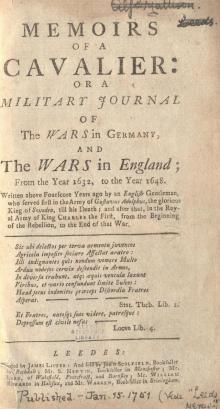 Memoirs of a Cavalier
Memoirs of a Cavalier_preview.jpg) The Life and Most Surprising Adventures of Robinson Crusoe, of York, Mariner (1801)
The Life and Most Surprising Adventures of Robinson Crusoe, of York, Mariner (1801)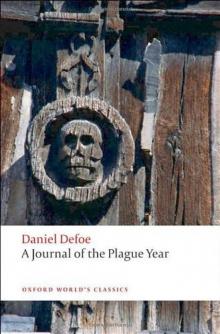 A Journal of the Plague Year
A Journal of the Plague Year_preview.jpg) The Life and Adventures of Robinson Crusoe (1808)
The Life and Adventures of Robinson Crusoe (1808)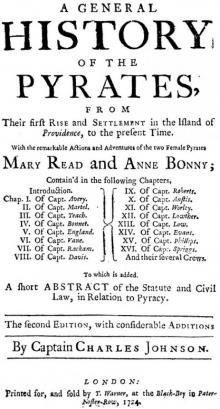 A General History of the Pyrates: / from their first rise and settlement in the island of Providence, to the present time
A General History of the Pyrates: / from their first rise and settlement in the island of Providence, to the present time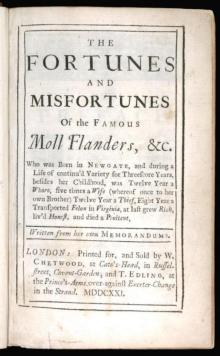 The Fortunes and Misfortunes of the Famous Moll Flanders
The Fortunes and Misfortunes of the Famous Moll Flanders_preview.jpg) The Fortunate Mistress (Parts 1 and 2)
The Fortunate Mistress (Parts 1 and 2) Robinson Crusoe — in Words of One Syllable
Robinson Crusoe — in Words of One Syllable From London to Land's End
From London to Land's End A New Voyage Round the World by a Course Never Sailed Before
A New Voyage Round the World by a Course Never Sailed Before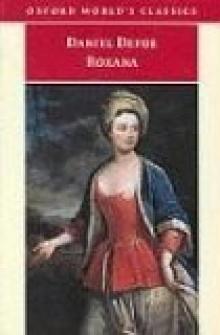 Roxana
Roxana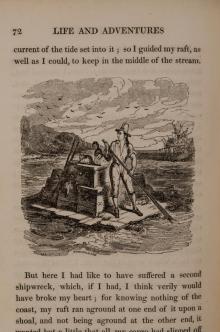 The Life and Adventures of Robinson Crusoe of York, Mariner, Volume 1
The Life and Adventures of Robinson Crusoe of York, Mariner, Volume 1_preview.jpg) Memoirs of Major Alexander Ramkins (1718)
Memoirs of Major Alexander Ramkins (1718) Dickory Cronke
Dickory Cronke Robinson Crusoe (Penguin ed.)
Robinson Crusoe (Penguin ed.) Moll Flanders
Moll Flanders The Further Adventures of Robinson Crusoe rc-2
The Further Adventures of Robinson Crusoe rc-2